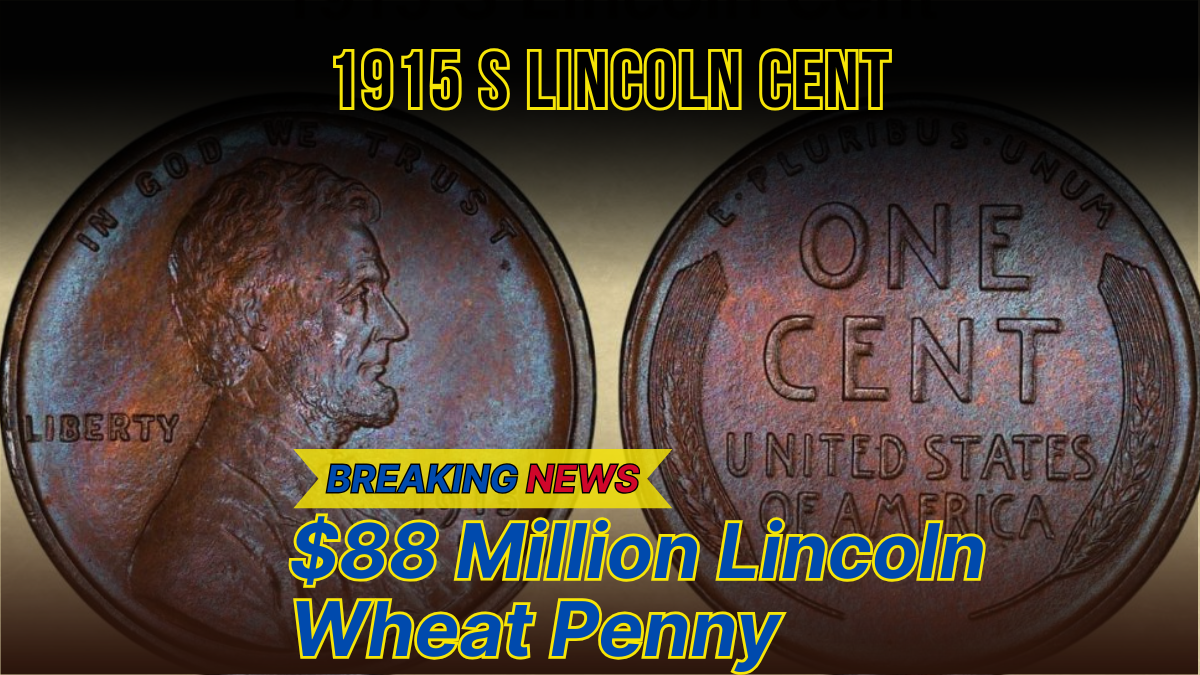Have you ever considered that the unassuming pennies in your pocket might hold extraordinary value? While most people overlook these copper coins as loose change, some rare Lincoln Wheat Pennies have shocked the numismatic world by being valued at up to $88 million. This astonishing figure opens a world of treasure-hunting possibility hiding in everyday places—from old jars and drawers to inherited coin collections.
Short Summary: The Lincoln Wheat Penny Worth $88 Million

| Feature | Description |
|---|---|
| Coin Type | Lincoln Wheat Penny |
| Most Valuable Version | 1943 Copper Penny |
| Estimated Value Range | $1.7 Million to $88 Million |
| Key Identifying Traits | Copper color, non-magnetic, 3.11 grams, 1943 date |
| Official Grading Services | PCGS, NGC |
| Notable Sales | 1943 copper penny sold for $200,000+ in 2019 |
| Risk | Counterfeit coins and altered dates are common |
The History of the Lincoln Wheat Penny
A Revolutionary Coin in American Currency
First introduced in 1909 to honor the 100th anniversary of Abraham Lincoln’s birth, the Lincoln Wheat Penny was a landmark in U.S. numismatics. It was the first American coin to feature a real historical figure instead of a symbolic figure like Lady Liberty.
Sculptor Victor David Brenner designed the obverse (front) side with Lincoln’s profile, while the reverse displayed two wheat stalks surrounding the words “ONE CENT” and “UNITED STATES OF AMERICA.” The iconic design remained in use until 1958 when it was replaced with the Lincoln Memorial image.
These pennies circulated during major historical periods, including both World Wars, the Great Depression, and the dawn of the Space Age.
The $88 Million Lincoln Wheat Penny: Real or Myth?
A Wartime Error Creates a Rarity
The 1943 copper Lincoln Wheat Penny is at the heart of the $88 million valuation story. In 1943, copper was a critical war material, and the U.S. Mint shifted penny production to zinc-coated steel. However, a few copper planchets from 1942 were mistakenly used in 1943, resulting in one of the rarest errors in U.S. coin history.
| Year | Standard Material | Error Material | Estimated Quantity | Value Range |
| 1943 | Zinc-coated steel | Copper | 15–20 | $1.7M – $88M+ |
Although documented sales of these rare pennies have reached around $1.7 million, collectors speculate that an impeccable specimen with flawless features could fetch tens of millions under ideal circumstances.
Other Exceptionally Valuable Wheat Pennies
| Year/Variety | Key Characteristics | Estimated Value Range |
| 1909-S VDB | San Francisco mint, VDB initials on reverse | $1,000 – $250,000+ |
| 1914-D | Denver mint, very low mintage | $250 – $50,000+ |
| 1922 Plain | Missing mint mark (error) | $500 – $25,000+ |
| 1944 Steel | Produced on wrong planchet | $75,000 – $500,000+ |
| 1955 Doubled Die | Obvious doubling of text and numbers on obverse | $1,000 – $120,000+ |
These coins are highly sought after due to production errors, historical anomalies, or low mintages.
Can These Rare Coins Still Be Found?
Yes, and that’s what makes this story so fascinating. Many valuable coins are still hiding in circulation due to:
| Factor | Explanation |
| Lack of Awareness | Most people don’t check their coins closely. |
| Visual Similarity | Valuable coins can look very similar to common ones. |
| Inherited Collections | Families often overlook valuable coins when passing down possessions. |
| Mixing with Loose Change | Rare coins sometimes get mixed into rolls or circulation during exchanges. |
| Wear and Tarnish | Condition may hide the distinguishing features of valuable coins. |
Identifying a Valuable Lincoln Wheat Penny
1. Check the Date and Mint Mark
Look for rare dates such as 1909-S, 1914-D, 1922 Plain, 1943 Copper, and 1955 Doubled Die. Mint marks (S for San Francisco, D for Denver) appear below the date.
2. Conduct the Magnet Test
- 1943 steel pennies stick to magnets.
- A 1943 copper penny will not stick to a magnet and weighs about 3.11 grams.
3. Look for Doubling and Errors
Examine the obverse closely. Doubling of text or absence of mint marks can signify valuable errors.
4. Assess the Condition
Uncirculated or well-preserved coins fetch higher prices. Look for:
- Sharp details
- Minimal wear
- Original luster
5. Weigh and Measure
A 1943 copper penny should weigh approximately 3.11 grams. Any deviation may require further examination.
What to Do If You Think You’ve Found One
- Handle With Care: Always hold the coin by the edges.
- Don’t Clean It: Cleaning reduces its collector value.
- Store Properly: Use acid-free, non-PVC holders.
- Authenticate Professionally: Submit to a grading service like PCGS or NGC.
- Beware of Counterfeits: Many rare coins are faked. Avoid buying without certification.
The Cultural and Historical Legacy
Beyond monetary value, the Lincoln Wheat Penny carries historical significance. It links collectors to pivotal eras in American history. For many, collecting these coins is a way to connect with the past and appreciate the artistry and evolution of U.S. currency.
Frequently Asked Questions (FAQs)
Q: How can I tell if my 1943 penny is the rare copper version?
A: It will be copper-colored, non-magnetic, weigh around 3.11 grams, and should be professionally authenticated.
Q: Are wheat pennies still found in circulation?
A: Yes, they occasionally appear in circulation, especially in older coin rolls and inherited collections.
Q: Is it legal to keep a rare penny I find?
A: Yes, it is completely legal to keep any coin you find in circulation.
Q: Should I clean my old coins to make them look better?
A: No. Cleaning significantly reduces a coin’s collector value. Always leave them in their original state.
Q: What is the average value of a common wheat penny?
A: Most common wheat pennies are worth 3 to 5 cents, though rare ones can be worth thousands.
Conclusion: The Hidden Value of Everyday Change
While the idea of an $88 million Lincoln Wheat Penny may seem far-fetched, it serves as a reminder of the potential hidden value in everyday life. Even if you never find a multimillion-dollar penny, the search can connect you to American history, teach you about coinage, and perhaps reward you with a valuable discovery.
So next time you receive change or stumble upon a jar of old coins, take a closer look—you just might be holding a piece of history.
For more details and authentication, visit:
- PCGS – Professional Coin Grading Service
- NGC – Numismatic Guaranty Company
For More Information Click Here







